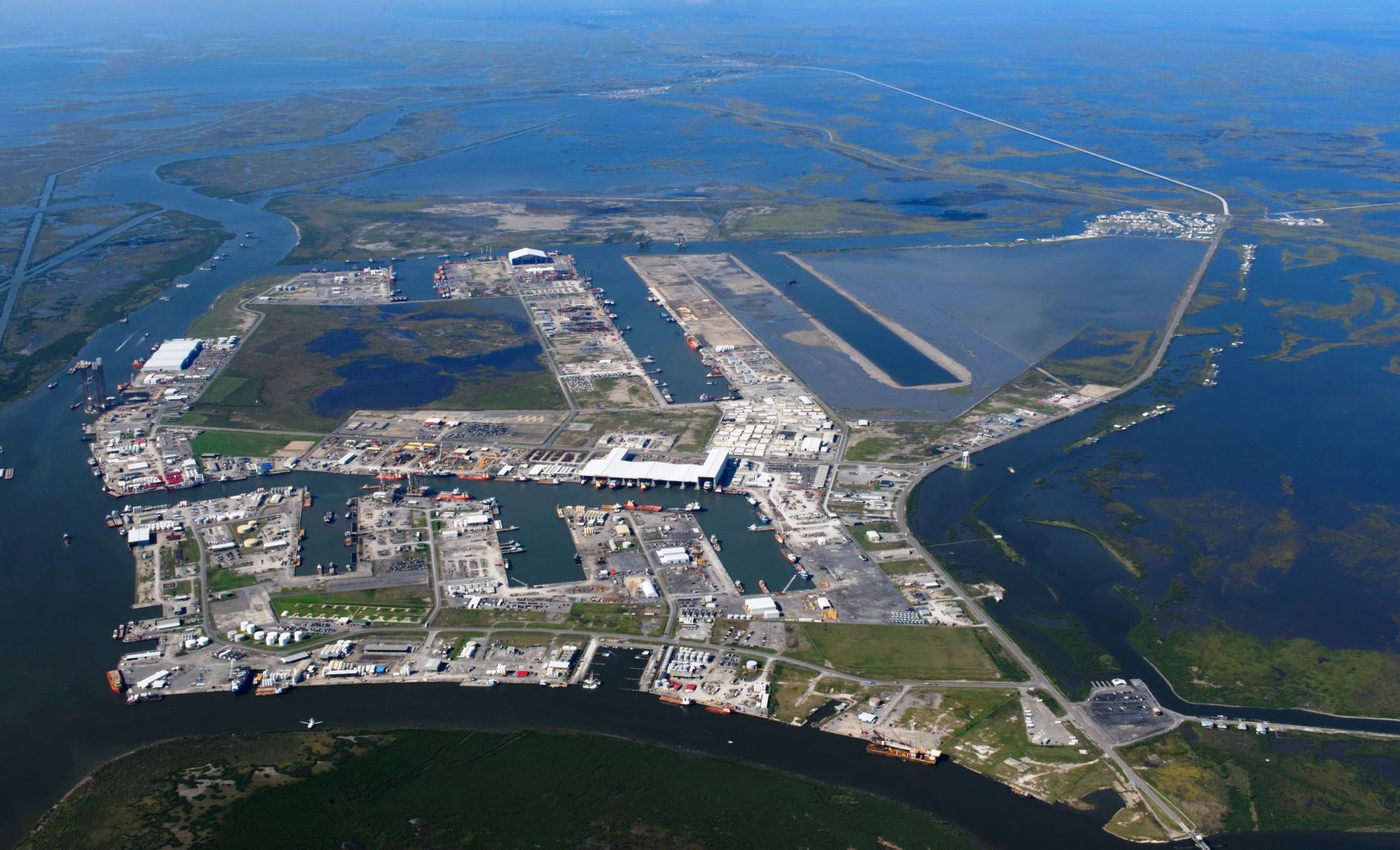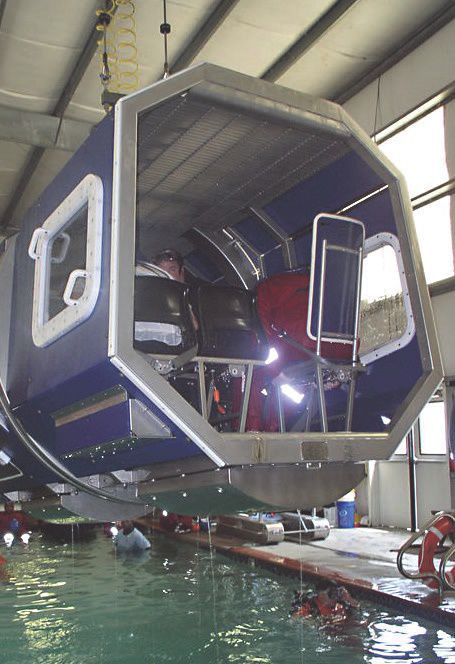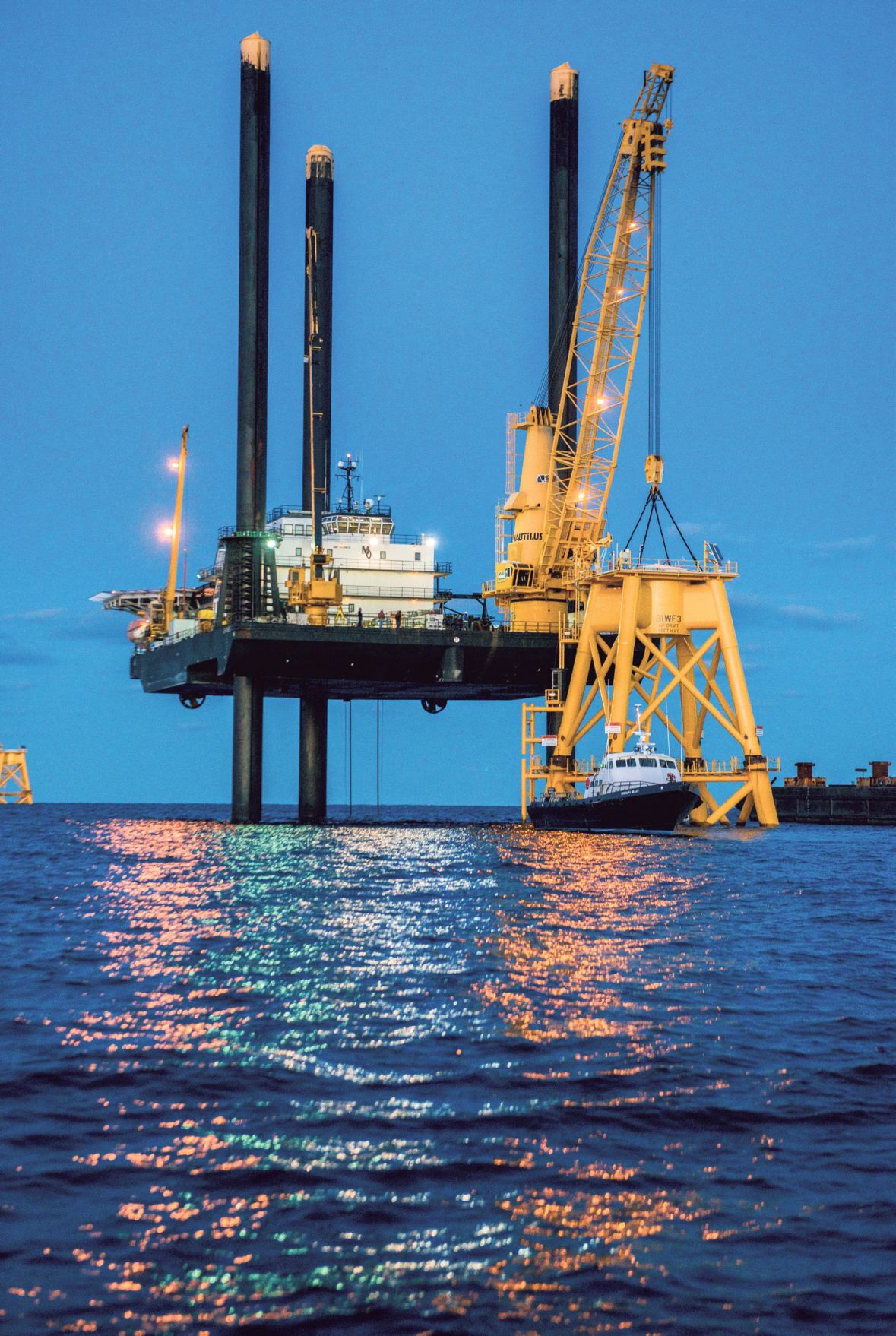
Fuel in the USA: Fourchon trying to push forward
May 24, 2016
Fletcher training tomorrow’s boat captains today
May 25, 2016With the marine industry searching every crevice of the market for work in this downturn, one local company is heading wherever the wind takes them.
Montco Offshore, based in Galliano, had its largest liftboat working on an offshore project outside of its normal purview last fall. Instead of supporting Gulf of Mexico oil exploration, the Liftboat Robert headed to the coast of Rhode Island to help develop the first offshore wind farm in the United States.
The Block Island Wind Farm is a 30-megawatt, 5-turbine wind farm that will provide most of the power to Block Island, an island 13 miles south of Rhode Island’s mainland with a population of more than 1,000 people. The wind farm, built by Deepwater Wind, is located 3 miles southeast of Block Island in state waters and is set to begin commercial operations by the end of this year.
But before the wind farm is up and running, the project must be completed. Last fall’s work featuring Montco’s L/B Robert was just setting up the foundational structures for the turbines. This summer, Montco is sending two vessels to assist in transporting turbine components from the port of Providence to the wind farm site. According to Deepwater Wind President Chris van Beek, the turbines should be installed by early September.
The work on the wind farm is the completion of a project Montco Chief Technology Officer Joseph Orgeron has been involved with for years. He originally was on the East Coast in 2009 working for the British Geological Society, using one of his liftboats to provide a stable platform to drill cores for scientific analysis. Word of his vessel and work spread, and soon Deepwater asked him to drill cores for what would eventually become the Block Island project.
“Six years later, in 2015, I got asked to go back up and actually put the structures and hammer in those piles that go into the sea floor that I had drilled the cores for five, six years earlier,” Orgeron said.
Van Beek spent 30 years in the offshore oil and gas industry, and he knew Montco from his time working in the Gulf of Mexico. He said the turbines for the farm are very sensitive, and any shock loads on the turbines are not allowed. Floating vessels would not provide the stability for installation purposes, so he looked for jackup vessels, such as the liftboats Orgeron’s company provides.
“If you look at the biggest jackup vessel suppliers in the United States, that’s Montco. So, in the early days, we were talking about Montco, what they could do on this project, what their limitation was, whether we had turbines they could install,” van Beek said.
The Deepwater Wind president said the Galliano company has worked wonderfully in new waters. Montco did not just provide a vessel, but the ship’s crew also assisted with installing the foundation. Accoridng to van Beek, the installation processes are very similar to oil and gas operations, so the Montco team’s wealth of experience working in offshore conditions came in handy. He had high praise for their engineering and planning on the Block Island project, stressing how critical it is to a successful endeavor.
“The preparations are very important, because you are in the water. You can’t improvise. You have to have all your equipment and procedures,” he said.
The project could not have come at a better time for Montco, as the slumping oil and gas economy means work for the offshore marine industry has dried up substantially. Orgeron said his company is getting close to having to take a boat out of service. If the 15-20 people working on that boat are not laid off completely, their work schedule gets reduced.
“In order to be able to avoid to take a boat out of the mix and keep everybody working at their normal schedule, you pick up these other jobs, like wind farms or scientific coring, things that are outside of normal oil and gas operations,” he said.
The trips up the East Coast carry their own challenges, though. Liftboats must generally stick to the coastline for travel, so Montco’s crews cannot cut across the Gulf; the vessel must instead ride along both sides of Florida’s coast to get to Block Island. According to Orgeron, a one-way trip usually takes about 14 days. That kind of time commitment means Montco makes a concrete plan with Deepwater before hitting the waters. Local oil and gas work, though more lucrative in boom times, slated to last a month could finish two weeks early.
“So, the wind farm stuff is more like a planned contract, steady, guaranteed work. Where here Gulf of Mexico it’s kind of like, spackle in, stock market work, get it when you can,” he said.
The marine company can also face some challenges from some of the more environmentally engaged people in the Northeast. Orgeron said the first time he went to New Jersey, the ship stopped at a restaurant along the port to eat. The maître d’ noticed the weird-looking ship with legs, and could tell Orgeron and his crew were not from the area.
“The maître d’ asked if we were doing oil and gas. I said, “No,” she said, “OK, come on in,” Orgeron said, chuckling.
When the wind farm is complete, it should provide considerable savings to Block Island residents. The island is not currently connected to National Grid, an electricity provider in Rhode Island. Block Island generates power through diesel at the moment, which is transported there via ferry. According to van Beek, some summer days, residents are paying as much as 60 cents per kilowatt. The wind farm will connect Block Island to the grid and provide clean energy for residents. van Beek estimated DWW would sell power at around 24 cents per kilowatt.
Van Beek said he has been more than pleased with Montco’s work and would highly consider working with the company again on larger projects in the future. Orgeron said renewable energy and scientific coring work make up about 10 percent of his company’s business, but he knows the bread and butter still lies in the Guf. He described himself as an “all-of-the-above energy type of guy,” noting the nation’s energy self-sufficiency was the most important factor.
“That (self-sufficiency) and keeping my boats busy and keeping my payrolls to keep everybody employed. I’m all for green energy and renewables on that front,” Orgeron said.










